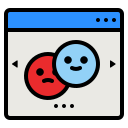Tips for Choosing the Right No-Code Tool for Your Needs



Check whether the platform supports relational tables, references, and validations. If your process relies on parent–child relationships or calculated fields, test them with realistic records, not tiny toy examples.



Integrations and Extensibility
Prefer platforms with reliable, well-documented connectors to your CRM, email, payments, and storage. Native beats custom because updates are maintained by the vendor, reducing breakage during inevitable API changes.
Integrations and Extensibility
If your process is unique, verify you can call secure APIs and receive webhooks. Try a round‑trip test: post data in, transform it, then send it back out to confirm handling of errors and retries.
Security, Compliance, and Governance
Data Residency and Encryption
Confirm where data physically lives and whether encryption is applied in transit and at rest. For sensitive workflows, require customer-managed keys or at least documented, regularly tested encryption practices.
Access Controls That Scale
Test role-based permissions, SSO, and audit logs with a sample org structure. Simulate onboarding, offboarding, and temporary access to ensure security stays tight even as teams shift and projects multiply.
Compliance Proof, Not Promises
Request up-to-date certifications like SOC 2 or ISO 27001 and review the scope. If healthcare or finance is involved, verify HIPAA or PCI implications early, and document vendor responsibilities in writing.
Cost, Value, and Hidden Tradeoffs
Model seats, records, workflow runs, storage, and environments. Include likely growth and seasonal spikes. Share the model with finance to align expectations and avoid emergency budget requests later.
Cost, Value, and Hidden Tradeoffs
A tool that halves delivery time may justify higher licenses. Compare the opportunity cost of waiting months for coding versus launching in weeks with a well-fitted no-code platform that accelerates learning.
Cost, Value, and Hidden Tradeoffs
List essential features like SSO, custom domains, or advanced automations and check which tiers unlock them. Avoid architectures that depend on features stranded behind enterprise pricing you cannot sustain.
Usability, Training, and Team Fit
Give makers a one-week sprint to rebuild a real process. Track questions, blockers, and the number of times they needed help. If progress feels joyful, you’re on the right path; if not, reconsider.
Usability, Training, and Team Fit
Strong docs, examples, and tutorials reduce support tickets and new-hire ramp time. Skim release notes to see how the vendor explains changes and whether learning keeps pace with product evolution.


Proof of Concept, Scorecards, and Stories
Define a small but representative workflow and build it in two tools. Measure setup speed, performance, and change requests completed. Invite end users to test and rate clarity, speed, and reliability.
Proof of Concept, Scorecards, and Stories
Weight criteria like data modeling, integrations, security, and costs. Score each tool with comments and screenshots. Decisions feel calmer when everyone can see tradeoffs and rationale in one shared document.


